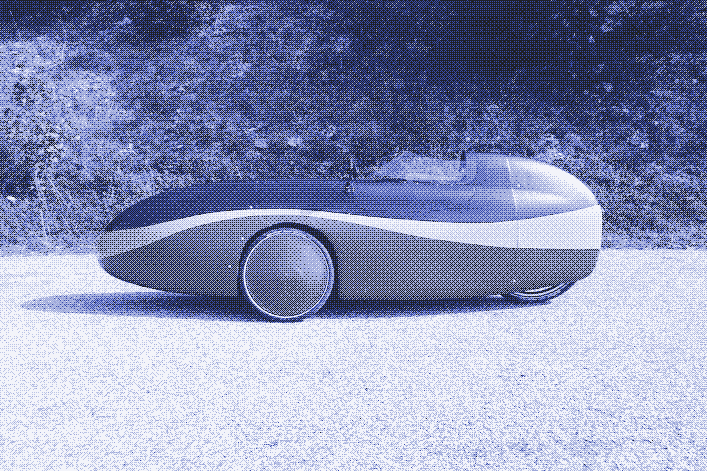Speed record of a velomobile: 144 km/h https://www.aerovelo.com/eta-speedbike
We don’t need any knew infrastructure, we just need to get cars out of the way
The idea of needing specialized transport as an individual beyond just walking is a failure of society. Replacing cars with “not-cars” isn’t really helping that aspect. You should be structuring society so that cars or “not-cars” have no need to exist for almost everyone.
Someone versed in urban ecosystems could chime in better, because there’s gotta be proper terms for city to city transport, city to neighborhood, neighborhood to street, street to home.
Bikes or some kind of personal vehicle are still probably necessary to get you from city to home, because they can’t put train stations next to every house (unless they figure out how to shoot us through tubes or something).
@dessalines @PowerCrazy No, it really is feasible to have PT close enough to everyone’s house. Some will choose a bike to cut 15m walking into 5m riding, but it isn’t required.
Part of that is that every neighbourhood needs all types of housing. Okay, not every one needs high rise apartments. But medium rise next to the station above the restaurants and retail, surrounded by town houses, surrounded by units, surrounded by 1/3rd acre house blocks
It really isn’t crazy
Utopia needs many changes
Indeed, and currently there exist several cities that execute that ideal more-or-less. NYC is the obvious one, but Washington DC, Chicago, hell even the worst city in America, San Francisco does it adequately. The only reason we can’t have that kind of public transit everywhere is because no one is forcing city officials to plan for the long-term, and reduce sprawl.
Zero Growth Lines are a great way to mandate density, without any other policies needed.
I’d be happy just having bikes be viable as an individualized transportation method. I’d much rather a 30-minute bike ride than a car ride every day
I rode my bike instead of driving today. It took twice as long, and the hills kicked my ass, but I felt amazing afterwards. Evem hours later I am still riding the endorphin high. Hearing traffic used to give me anxiety, but I used noise cancelling earbuds so I could listen to an audio book and that made a huge difference
The transition needs to be easy for adoption to happen though. I think first replacing cars with not-cars, and only then scaling cities to be more walkable makes sense.
I don’t see how going from car to proper city planning is any harder than going from not-car to proper city planning. This just feels like an extra unnecessary step that could be taking resources away from the city planning part.
If you make a city hostile to cars first, people will still have their cars and their commutes, it will just double the time it takes for them to get anywhere. You will lose support for any further changes.
If you replace the cars first, such that no one’s daily schedules are significantly altered, and then condense the cities, then the change might be less jarring for those who can’t weather dramatic changes in their lifestyle.
If you replace the cars first, such that no one’s daily schedules are significantly altered,
Is that going to happen if you replace cars with another vehicle that still requires car infrastructure?
it shouldn’t, should it? Switch an ICE for electric, as long as they travel the same daily distance and meet the same use cases, the only lifestyle change would be the expense.
I feel there’s probably some reasons they haven’t become popular.
-
Don’t turn as nimbly as a bike
-
Can’t put them on your shoulder and carry them indoors, onto a train, etc. like as a bike
-
Don’t climb hills as well as a bike (source)
-
20× the cost of a bike, maybe that could be brought down by economies of scale if they were more popular
I could imagine a velomobile being preferable if you’re commuting from a satellite town to the city, and the journey consists of a long straight road.
I’d definitely say they’re worse for getting around the city, and their comparative advantages are bought at the price of significant extra overhead.
You should discount all impairments caused by oil industry lawfare against velomobiles.
https://xfwnofqagsnmdxuf.quora.com/Lawfare-against-tiny-cars-velomobiles
The oil industry didn’t legally manipulate velomobiles into having a wide turning circle
-
Both the velomobile and the electric bicycle increase the limited range of the cyclist – the former optimises aerodynamics and ergonomics, while the latter assists muscle power with an electric motor fuelled by a battery.
The electric velomobile combines both approaches, and so maximises the range of the cyclist – so much so that it is able to replace most, if not all, automobile trips.
Why aren’t we all driving around in these things?
deleted by creator
This comment is rational.
For those inter-city bike lanes like you see in some parts of France they would be great.
Because both Cars i own were cheaper than buying one of those, atleast where iam. I quite literally can’t afford one.
I wished we would just tax the environment destroying vehicles to subsidize these velomobils. Another idea would be to include them in car-sharing offerings. I don’t need to own one, but I would love to rent it once in a while.
I didn’t check the price before … Yeah here in germany you’d get, a pedal only version, for around 12.000 Euros ( + 250 Euros delivery )
The niceley used one without Battery is 6k.
€6,000 is, unfortunately, well into the territory of competing with used cars. It absolutely needs to be cheaper than that to gain mass adoption. I’m sure it can be since this looks like a high-end product aimed at a very specialist market just now, but right now that is a major obstacle.
someone could buy multiple used cars for that price.
They don’t sell them in “hide my insecurities” sizes.
In Sweden people generally dont drive around in dinosaur-sized car, but they have been increasing lately. Yesterday I had my first personal experience of how much of an issue they are. I was in line for a left-turn in a crossing and noticed that the last car from the opposite side was also gonna turn left. The 2 cars in front of me already crossed the road and head left, i drive forward just a moment later than the huge RAM from the other side and notice a Nissan Micra that is heading straight towards me instead of turning. It was completely hidden behind the monster car and neither me nor the drivers in front of me in my lane had noticed it. Cars of that size not only endanger pedestrians by not seeing them but also obscure general traffic scenarios. They should not be allowed on the street tbh…
this looks unsafe as fuck
Well, unsafe if there are cars all around you. But if we replaced a lot of cars with these vehicles which typically go around 40 to 70 km/h cruise speed, I think it would become way safer than cars.
Just like regular bikes, it depends on how the bike and car lanes are layed out. If you keep them seperate the bike is unlikely to be hit.
separation of bikes and cars are rare in my city/country, and traffic tends to be very chaotic.
the main reason i say these look unsafe is that they look way less maneuverable for this situation. the nimbleness my bike has helped me avoid pretty gnarly accidents a couple of times before.
A colleague of mine has one. They are easy to overlook and he sometimes has pretty bad looking crashes (from the outside) but the chassis themselfs are extremely sturdy and protecting. He slid down a road 25m at one point, crashing into a pole, but only got a bruise from it. Because, and that’s the main point: these things are not going down 50mph, they are at 18mph and the only dangerous parts are intersections where cars are slower anyways
They also have e-scooters now that can do like 80 mph / 130 km/h .
This wiki page on Efficiency of transport is really well done. But if you sort by km / MJ, e-scooters and bikes are the most efficient forms of transport.
the biomass powered motor, also known as the driver
okay that’s funny
Velomobiles are neat but the idea is more practically executed in something like the Electrom LEV
This seems like something you don’t want to use on a road with cars. Otherwise it looks neat!
There’s nothing, except maybe a tank, that I would want to use on a road with other cars/tanks.
Nice, had no idea these existed.
Do they make some for hauling things (say a weeks with of groceries for a family of 4 or several sheets of drywall)?
That’s totally different from a velomobile. Did you read the article?












